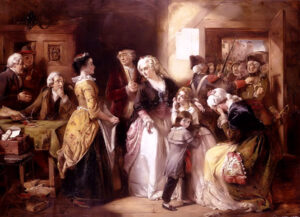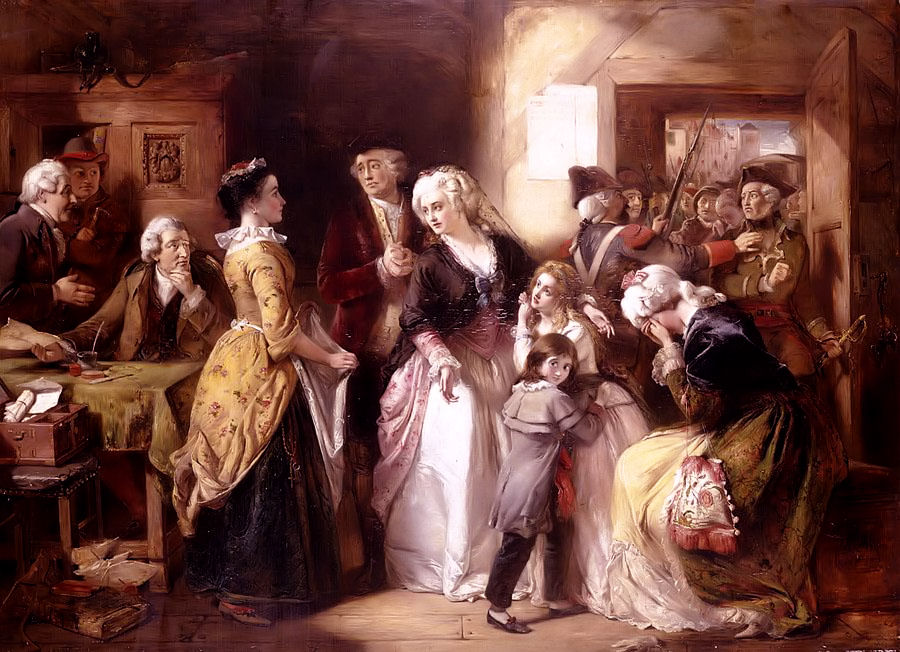Vaša košarica je trenutno prazna!
King Louis XVI’s Flight to Varennes: A Failed Escape Attempt

On June 20, 1791, during the tumultuous early stages of the French Revolution, King Louis XVI and his family attempted a desperate escape from Paris. Disguised as commoners, they fled the Tuileries Palace in a coach, hoping to reach the royalist stronghold of Montmédy near the Austrian Netherlands border. Their aim was to rally support from loyalist troops and foreign powers to suppress the revolution and restore the monarchy’s absolute authority. However, their elaborate disguise and slow progress ultimately betrayed them. They were recognized and intercepted in the town of Varennes-en-Argonne. The royal family was then forcibly escorted back to Paris, their failed escape severely damaging their credibility and popular support. This event proved to be a turning point, accelerating the radicalization of the revolution and solidifying the republican sentiment among the populace.
Victoria Becomes Queen: The Dawn of a New Era in British History

June 20, 1837, marked the ascension of an iconic monarch to the British throne: Victoria. At just 18 years old, she inherited the crown following the death of her uncle, King William IV. Her reign, which would last for 63 years and seven months, was the longest of any British monarch until surpassed by Elizabeth II. Queen Victoria’s rule coincided with a period of immense industrial, cultural, political, scientific, and military expansion for the British Empire. This era, known as the Victorian Age, saw significant social reforms, technological advancements like the railway, and a flourishing of arts and literature. Victoria became a symbol of stability and morality for her subjects, deeply influencing British national identity. Her strong sense of duty and commitment to her role helped to restore the prestige of the monarchy after a period of decline.
Emancipation Proclamation (Effective Date): A Turning Point in the American Civil War

While initially issued on September 22, 1862, President Abraham Lincoln’s Emancipation Proclamation officially went into effect on January 1, 1863, with June 20, 1863, specifically marking a key development. On this date, West Virginia was admitted to the Union as a free state, a direct consequence of the ongoing Civil War and the divisions over slavery. While the Emancipation Proclamation declared all enslaved people in Confederate states to be free, its immediate impact was limited in areas under Confederate control. However, it fundamentally shifted the character of the Civil War, transforming it from a conflict solely about preserving the Union into a fight for human freedom. The proclamation also encouraged many enslaved individuals to escape to Union lines, significantly weakening the Confederate war effort. It laid the groundwork for the eventual abolition of slavery across the entire United States with the Thirteenth Amendment.
The Invention of the Ferris Wheel: A Fairground Icon Debuts

On June 20, 1893, a groundbreaking new attraction made its public debut at the World’s Columbian Exposition in Chicago: the Ferris Wheel. Designed by American engineer George Washington Gale Ferris Jr., it was conceived as a rival to the Eiffel Tower, which had captivated visitors at the 1889 Paris Exposition. Standing an impressive 264 feet tall, the original Ferris Wheel carried 36 cars, each capable of holding 60 people. Its construction was a marvel of engineering for its time, offering passengers unprecedented panoramic views of the exposition grounds. The Ferris Wheel quickly became a sensation, drawing massive crowds and becoming an iconic symbol of the fair. Its innovative design and thrilling experience forever changed the landscape of amusement parks and fairgrounds worldwide. Today, various versions of the Ferris Wheel remain a beloved and recognizable feature at carnivals and tourist destinations across the globe.
The Great Train Robbery (Part Deux): A Notorious Australian Heist

On June 20, 1904, Australia witnessed one of its most daring and notorious train robberies, often referred to as “The Great Train Robbery” by some, distinguishing it from the American film. A gang of armed bushrangers, led by the infamous Patrick Kenniff, ambushed the mail train near Pinkenba, Queensland. They specifically targeted the train’s strongroom, expecting to find a large sum of money. While the exact amount stolen remains debated, it was a significant sum for the time, primarily consisting of cash and gold. The robbery was characterized by its audacious planning and the violent confrontation that ensued with the train’s guards. The Kenniff gang’s escapades became legendary in Australian folklore, embodying the spirit of the bushranging era. This event highlights the challenges of law enforcement in the vast and rugged Australian landscape during the early 20th century.

